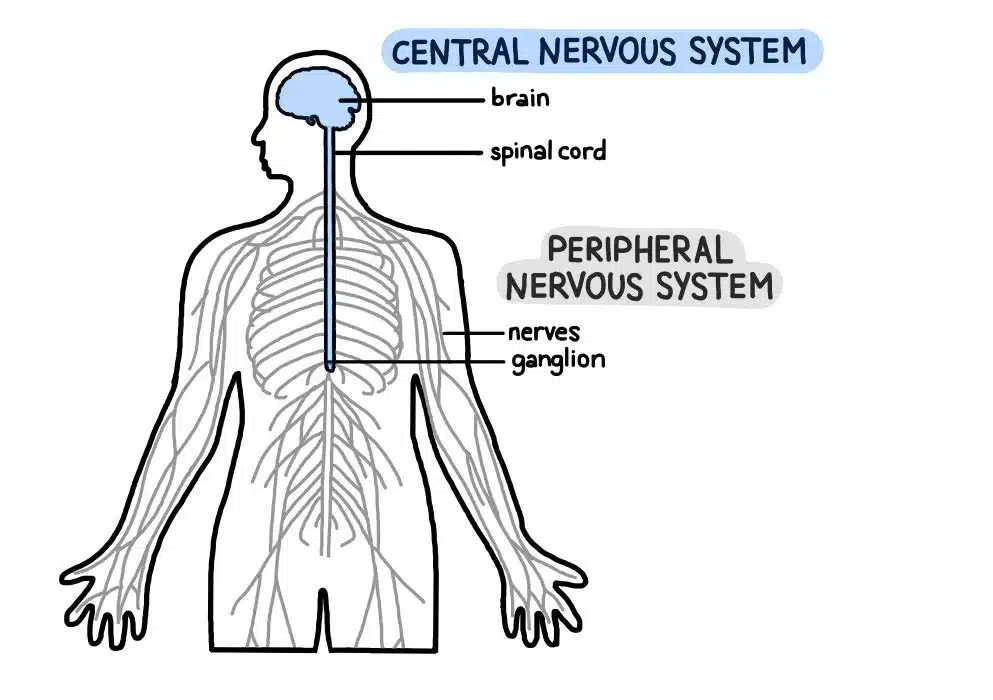The peripheral nervous system (PNS) is a complex network of nerves that extends throughout the body, connecting the central nervous system (CNS), which comprises the brain and spinal cord, to various organs, muscles, and tissues. This intricate web of nerves serves as a vital communication system, transmitting signals between the brain and the rest of the body, facilitating sensory perception, motor function, and autonomic control.
Diseases affecting the peripheral nervous system can manifest in various ways, often leading to disruptions in sensory perception, motor coordination, and autonomic functions. These conditions can arise from a multitude of causes, including genetic factors, infections, autoimmune responses, metabolic disorders, toxic exposures, traumatic injuries, and systemic diseases.
One common category of peripheral nervous system disorders is peripheral neuropathy, which involves damage to the peripheral nerves, leading to symptoms such as numbness, tingling, weakness, and pain in the affected areas. Peripheral neuropathy can result from conditions such as diabetes, infections (e.g., HIV, Lyme disease), autoimmune diseases (e.g., Guillain-Barré syndrome), vitamin deficiencies, and exposure to toxins (e.g., certain medications, chemicals).
Another significant group of disorders affecting the peripheral nervous system includes motor neuron diseases, which specifically target the motor neurons responsible for controlling voluntary muscle movements. Conditions like amyotrophic lateral sclerosis (ALS) and spinal muscular atrophy (SMA) fall into this category, causing progressive muscle weakness, atrophy, and eventually, loss of motor function.
Furthermore, disorders of the autonomic nervous system, which regulates involuntary bodily functions such as heart rate, blood pressure, digestion, and temperature control, can also impact peripheral nerve function. Dysautonomia syndromes, including orthostatic hypotension, postural orthostatic tachycardia syndrome (POTS), and autonomic neuropathy, can result in symptoms such as dizziness, fainting, gastrointestinal disturbances, and abnormal sweating.
Traumatic injuries, such as nerve compression, lacerations, and blunt force trauma, can also lead to peripheral nerve damage and subsequent functional impairments. In some cases, nerve injuries may require surgical intervention or long-term rehabilitation to restore optimal function.
Diagnosing and managing peripheral nervous system disorders often require a comprehensive approach involving detailed medical history assessments, physical examinations, neurophysiological tests (e.g., nerve conduction studies, electromyography), imaging studies (e.g., MRI, CT scans), and laboratory investigations (e.g., blood tests, nerve biopsies). Treatment strategies vary depending on the underlying cause and may include medications to alleviate symptoms (e.g., pain relievers, immunosuppressants), physical therapy, occupational therapy, lifestyle modifications, and in severe cases, surgical interventions or nerve regeneration therapies.
Despite the challenges posed by peripheral nervous system disorders, ongoing research efforts continue to expand our understanding of these conditions and develop innovative treatments aimed at improving patient outcomes, enhancing quality of life, and ultimately, finding potential cures. Through multidisciplinary collaborations among healthcare professionals, scientists, and advocacy organizations, there is hope for advancements in the diagnosis, management, and prevention of peripheral nervous system diseases, offering promise for individuals affected by these debilitating conditions.









